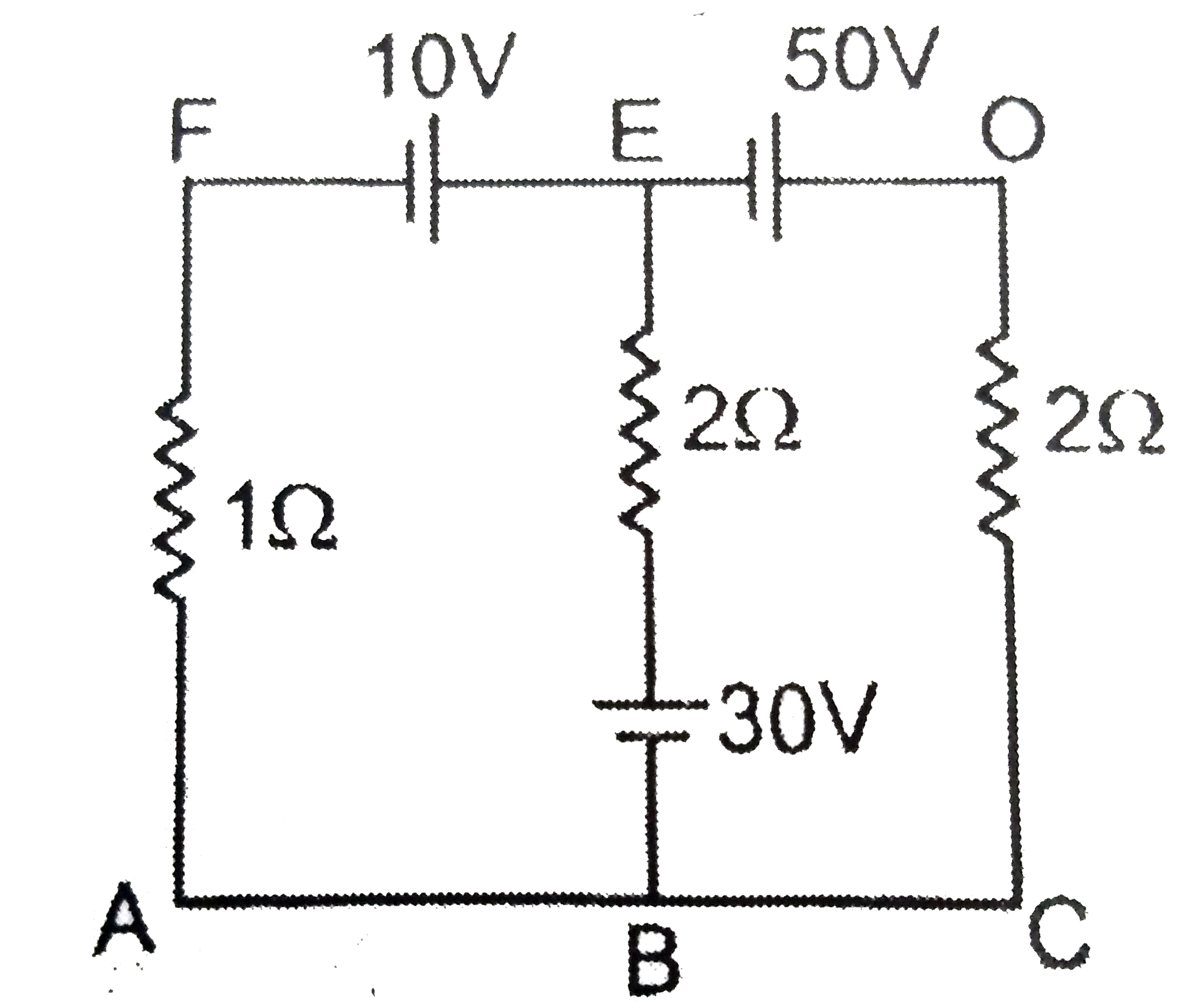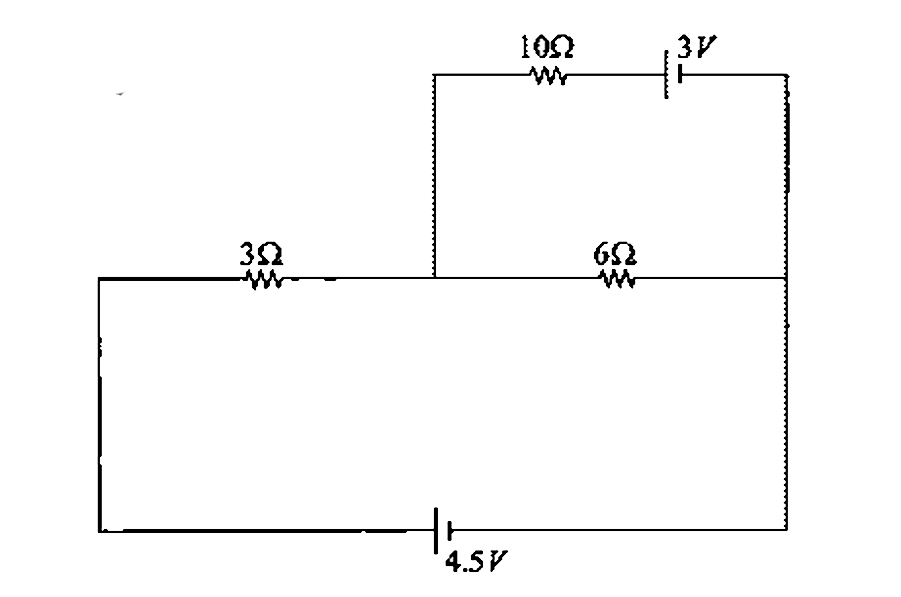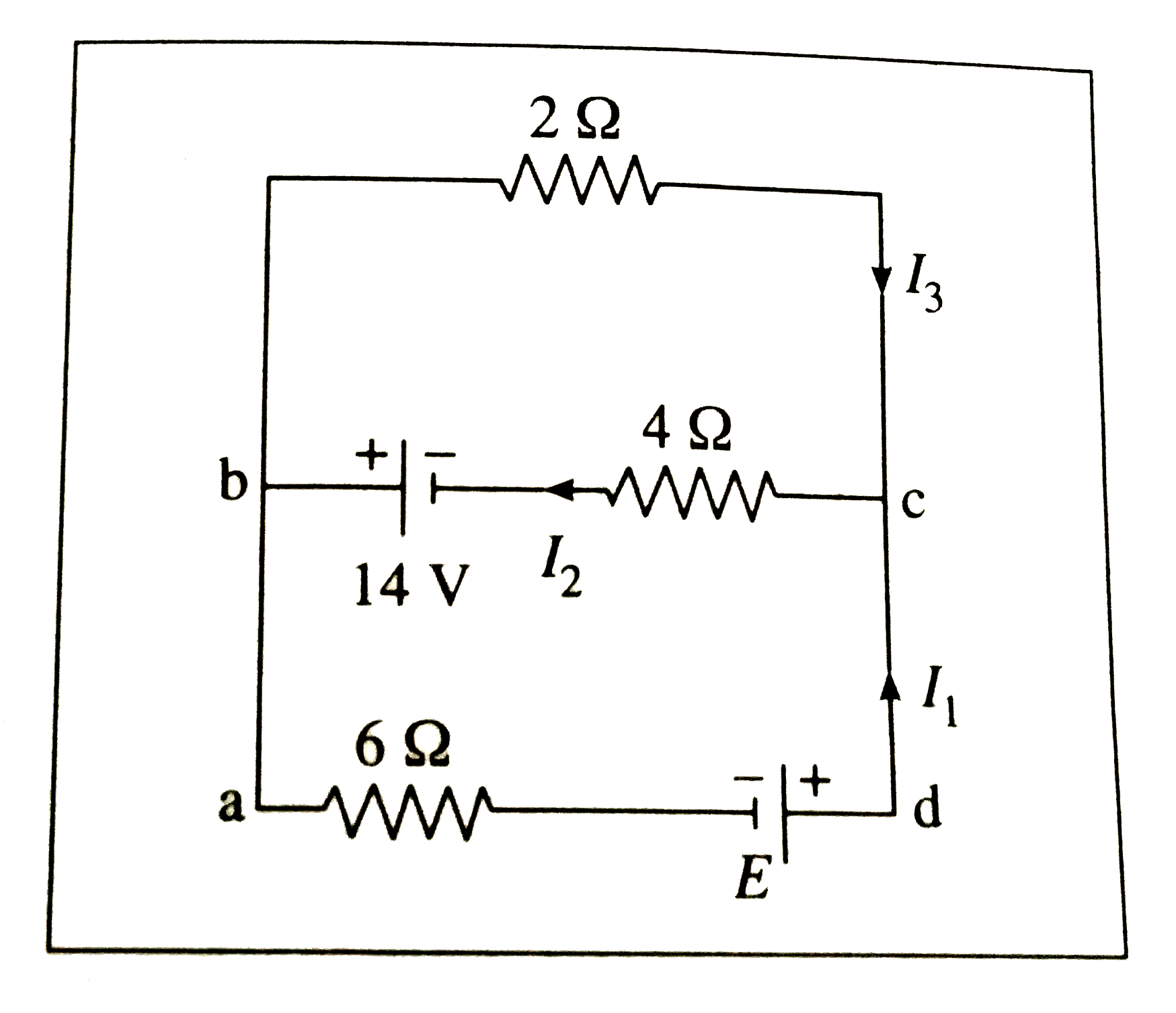State Kirchhoff' voltage law
Step-by-Step Solution:
1. Understanding Kirchhoff's Voltage Law (KVL):
Kirchhoff's Voltage Law is a fundamental principle in electrical engineering and physics that deals with the voltages in a closed circuit.
2. Definition of KVL:
Kirchhoff's Voltage Law states that the sum of the electrical potential differences (voltages) around any closed network is zero. This means that if you start at one point in a circuit and travel around the loop back to the starting point, the total voltage rises and drops will equal zero.
3. Mathematical Representation:
Mathematically, KVL can be expressed as:
∑V=0
where ∑V represents the algebraic sum of all the voltages in the closed loop.
4. Implication of KVL:
The law implies the conservation of energy, meaning that the energy supplied by sources (like batteries) is equal to the energy consumed by the components (like resistors, capacitors, and inductors) in the circuit.
5. Application of KVL:
KVL is used to analyze complex circuits by writing equations based on the voltages across each component in the loop and solving for unknown values.
Kirchhoff's Voltage Law is a fundamental principle in electrical engineering and physics that deals with the voltages in a closed circuit.
Kirchhoff's Voltage Law states that the sum of the electrical potential differences (voltages) around any closed network is zero. This means that if you start at one point in a circuit and travel around the loop back to the starting point, the total voltage rises and drops will equal zero.
Mathematically, KVL can be expressed as:
∑V=0
where ∑V represents the algebraic sum of all the voltages in the closed loop.
The law implies the conservation of energy, meaning that the energy supplied by sources (like batteries) is equal to the energy consumed by the components (like resistors, capacitors, and inductors) in the circuit.
KVL is used to analyze complex circuits by writing equations based on the voltages across each component in the loop and solving for unknown values.
Topper's Solved these Questions
- BOOK - MODERN PUBLICATIONCHAPTER - CURRENT ELECTRICITYEXERCISE - REVISION EXERCISES (ADDITIONAL QUESTIONS)11videos
CURRENT ELECTRICITY
- BOOK - MODERN PUBLICATIONCHAPTER - CURRENT ELECTRICITYEXERCISE - REVISION EXERCISES (FILL IN THE BLANKS)10videos
CURRENT ELECTRICITY
- BOOK - MODERN PUBLICATIONCHAPTER - CURRENT ELECTRICITYEXERCISE - HIGHER ORDER THINKING SKILLS & ADVANCED LEVEL10videos
CURRENT ELECTRICITY
- BOOK - MODERN PUBLICATIONCHAPTER - ATOMS EXERCISE - Chapter Practice Test16videos
ATOMS
- BOOK - MODERN PUBLICATIONCHAPTER - DUAL NATURE OF RADIATION AND MATTER EXERCISE - CHAPTER PRACTICE TEST15videos
DUAL NATURE OF RADIATION AND MATTER
Similar Questions
Knowledge Check
- Question 1 - Select One
Assertion:- Kirchhoff's voltage law indicates that field is conservative.
Reason:- Potential difference between two points in a circuit does not depend on pathAIf both Assertion & Reason are True & the Reason is a correct explanation of the Assertion.BIf both Assertion & Reason are True but Reason is not a correct explanation of the Assertion.CIf Assertion is True but the Reason is False.DIf both Assertion & Reason are False. - Question 2 - Select One
Kirchhoff's voltage law is based on the law of conservation of
AmomentumBchargeCmassDenergy
Find the current in each wire applying only Kirchhoff voltage law
 View Solution
View SolutionThe Kirchhoff's Current Law|The Kirchhoff's Voltage Law
View SolutionCells, Ideal and Non Ideal Cells, KIrchhoff's Current Law, Kirchhoff's Voltage Law
View SolutionCells, Ideal and Non Ideal Cells, KIrchhoff's Current Law, Kirchhoff's Voltage Law
View SolutionFind the current in 6Ω resistance in the circuit shown in figure-3.135 using Kirchhoff's voltage Law.
 View Solution
View SolutionState Kirchhoff's law of radiations.
View Solution



